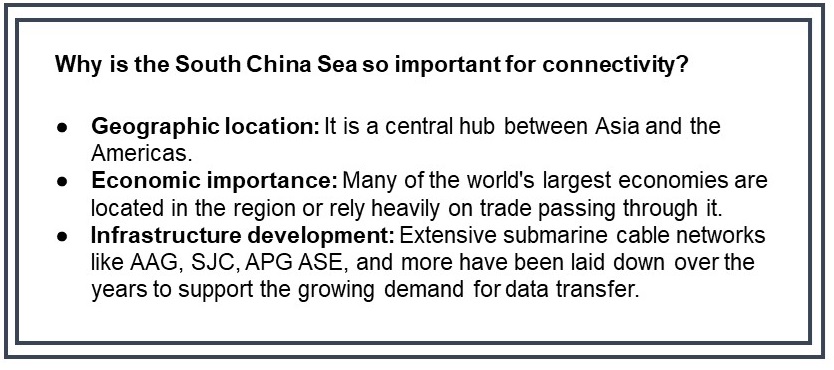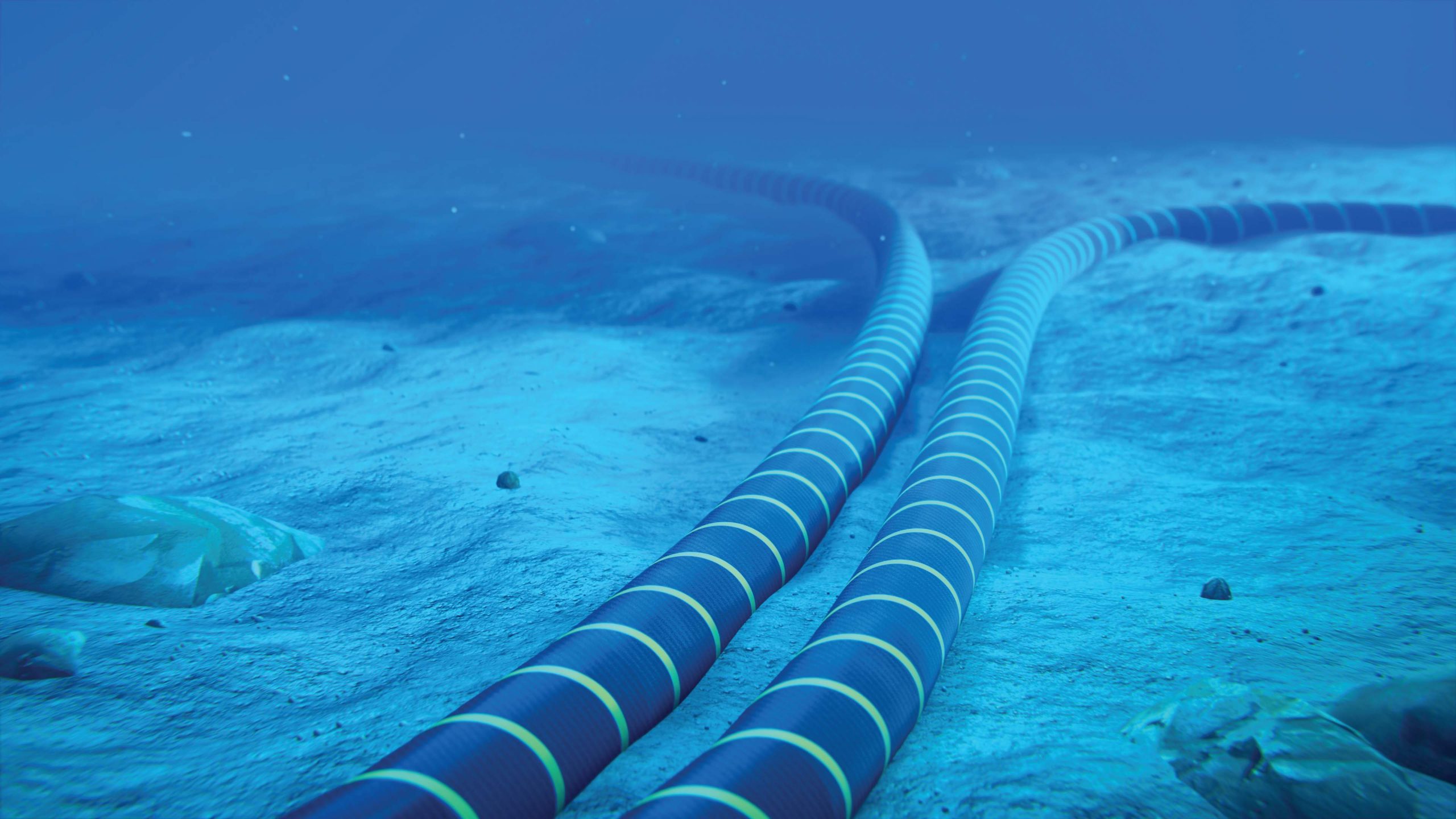Resilience Beyond Borders: Why Subsea Cable Diversification Matters
-
September 5, 2024
-
4 min read

In the ever-connected world of 2024, the infrastructure supporting our digital lives has never been more critical or vulnerable. Imagine a vast, intricate web beneath the ocean’s surface, carrying the world’s data, from business transactions to personal communications. Now, consider that a significant portion of this web runs through a region increasingly fraught with geopolitical tension: the South China Sea. A substantial amount of submarine cables connecting Asia and the Americas passes through this region. As the stakes rise, so does the urgency for businesses to diversify their subsea cable infrastructure, ensuring their digital operations remain resilient against potential disruptions.

The Rising Stakes
The South China Sea has long been a strategic artery for global data traffic, but its geopolitical landscape has become more volatile in recent years. As geo-political tension and rivalry between the United States and China intensify, the risks associated with relying solely on this region for subsea cable connectivity have become too apparent. For example, China’s increasingly stringent permit requirements have delayed critical projects, like the SJC2 cable that was supposed to connect Japan to Singapore. Moreover, U.S. efforts to exclude Chinese companies from global subsea cable projects have further complicated the situation. Permit delays, increased costs/deployment timelines, and geopolitical complexities highlight the fragility of a network heavily dependent on a single, unstable region.
On the other hand, the demand for digital connectivity is growing rapidly. In the ASEAN region alone, the digital economy is expected to add $1 trillion to its GDP over the next decade. A robust and resilient network is essential to support this growth, making it critical for businesses to overcome the subsea cable challenge in the region. Only then they be well-positioned to capitalize on this digital expansion.
Here is a 3-step guide on how to reduce reliance on South China Sea routes and build a robust network.
Step 1: Diversify, diversify, diversify to build redundancy.
In today’s volatile geo-political climate, building redundancy into your network architecture is no longer a luxury—it’s a necessity. Diversifying your subsea cable routes can mitigate these risks, ensuring your business remains connected and operational, even in the face of unexpected challenges.
Fortunately, new subsea cable systems are emerging, offering promising alternatives to the high-risk South China Sea routes. Projects like Bifrost, Echo, and Hawaiki Nui, which connect Singapore and the Philippines to the United States, provide direct alternatives that bypass this tense region. Apricot cable that connects Japan to Singapore, running to the east side of the Philippines, is another good alternative. These new routes offer enhanced resilience and redundancy, making them a smart investment for any business looking to future-proof its digital infrastructure.
Step 2: Have a plan B, C, and D ready always.
Consider satellite communication as a backup for critical applications, and evaluating terrestrial microwave links for short-haul connectivity must be part of your contingency plan.
- Identify applications and prioritise them for backup.
- Decide backup plans for partial cable failure and total cable failure.
- Invest in network monitoring and analytics tools to proactively identify potential issues.
- Implement load balancing and advanced traffic engineering techniques to optimise network performance at all times.
- Include insurance coverage and supply chain diversification in your strategies to mitigate risk.
Step 3: Evaluate the DC-cloud-cyber security strategy in parallel.
Distribute data centers across multiple regions to reduce reliance on a single location. Leverage cloud-based services for disaster recovery and business continuity, and strengthen security measures to protect network infrastructure and data from threats.
The Path Forward: Building a Resilient Digital Backbone
The unfolding geopolitical tensions in the South China Sea underscore the critical need for businesses to take a proactive approach to their digital infrastructure. By diversifying subsea cable routes, you’re not just safeguarding against potential disruptions—you’re future-proofing your business in an increasingly uncertain world. With new routes and technologies emerging, now is the time to invest in a more resilient and secure network infrastructure.
The South China Sea is a key character in the story of global connectivity—but it’s not the only one. By looking beyond this region and exploring new possibilities, businesses can ensure that their digital operations remain uninterrupted, no matter the challenges.
 Share
Share









